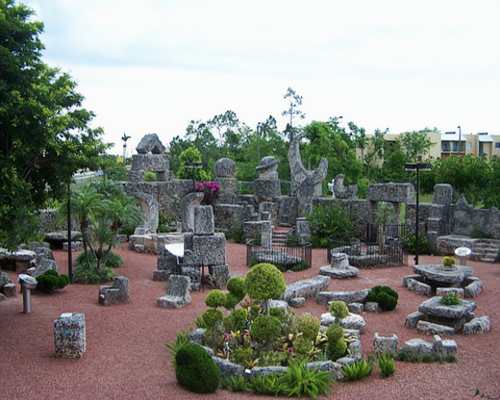According to the legend, the bride is jilted at the altar. In the instance of Edward Leedskalnin, the exact opposite occurred.
The Latvian laborer was engaged to marry Agnes Skuvst at the age of 26. She called it quits the night before the wedding. Leedskalnin fled to North America, where he worked in numerous lumber camps in Canada, California, and Texas. Growing up, little Edward had been a sickly youngster who spent his time inside reading books since he was born in 1887. He only completed fourth grade before dropping out of school due to boredom, despite having a strong desire for knowledge. Leedskalnin suffered tuberculosis during his early years in the United States. Around 1919, he relocated to Florida, where he purchased a small plot of land near Florida City (the southernmost region of Dade County).
Leedskalnin built his first Florida City castle, “Ed’s Place,” in Florida City in 1923. It was a pretty rural area with minimal development at the time. The castle stayed in Florida City until around 1936, when Leedskalnin decided to relocate it to its current position at 28655 South Dixie Highway in the southwestern neighborhood of Miami, Florida, presently known as Leisure City (above). When he heard of plans to develop land in the region, he spent three years moving the Coral Castle structures just ten miles up Dixie Highway to safeguard his solitude.
The underlying interest with Coral Castle has little to do with what Ed Leedskalnin created, or even why he carved it. The true mystery that attracts people today is how he carved it. The enigma is around how one man, working alone and without heavy equipment, could quarry and move stones weighing several tons each. The site is visually appealing, well-landscaped, and intriguing from a sculptural standpoint due to its variety of shapes. However, such diversity tends to produce a sort of “hodgepodge” that lacks visual unity. It has the appearance of a mature man’s playground.
Edward Leedskalnin toiled on the Coral Castle for more than 28 years, unwilling to let anyone view him as he worked. A few teens who claimed to have discreetly spied on him as he worked said that he made the coral blocks move like hydrogen balloons. Leedskalnin mentioned only one tool: a “perpetual motion holder” (whatever that could be). Some of his pamphlet publications discussed strange magnetism theories. Coral Castle is a privately owned tourist attraction that charges $15 per person ($12 for seniors) for admission and is open seven days a week during daylight hours. Prepare to be amazed, if not completely overwhelmed, by “unusual accomplishment.”

